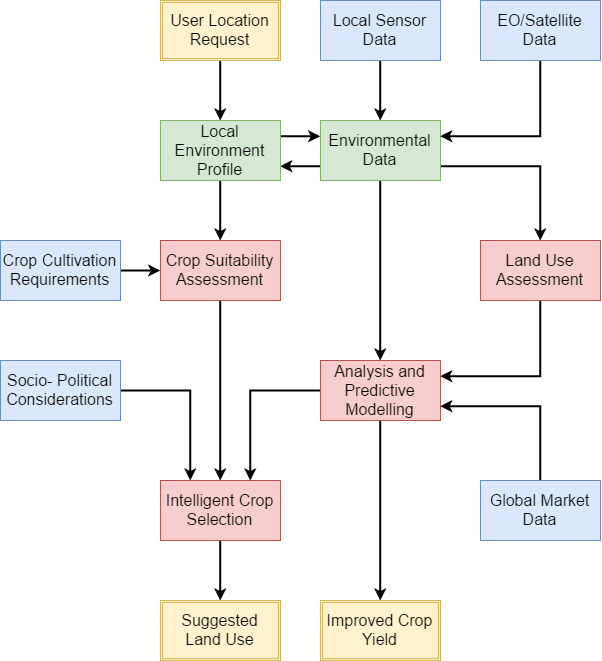Feedr | Live Smart
Team Updates

overall description of idea:
3 Parts: UI, Prediction Model & Hardware
Hardware:
Sensors measuring the state of the crop environment - humidity, temperature, UV levels.
Other input:
NASA satellite data indicating temperature, rainfall.
UI:
1) Create global real time map of predicted crop yield (using score given by prediction engine).
2) Create a map of what farmers plan to plant for next season (using input from farmers).
This allows a farmer to choose the best crop to plant in the next season, based upon real time predicted shortages/oversupply (from part 1) and what other farmers are planning to grow next season (from part 2). Ie. farmers don't want to contribute to oversupply as the price of a crop that is in oversupply will plummet.
Prediction Model:
Take inputs: sensor data (humidity, temperature, UV levels) & satellite data. These describe the environmental conditions in real time where the crops were growing.
Predict the quantity of the yield based upon the input environmental data.
Output a score for each crop for each farm (a number and an x,y location).a
End goal:
Replace the sensors with image analysis in the app of a photo of the soil taken by the farmer.
Differentiating factors:
Open source - fair for farmers around the world.
No one organisation implements it - individual farmers do. A farmer can use it without any sensors in their own farm, or can choose to invest in more sensors to get more precise data about their own farm.
The system functions in real time.
Pulling together actual NASA satellite data to use in extrapolation model.
Easy to use for farmers rather than scientists.
Replacing sensors with image analysis.
Benefits of this idea:
Allow farmers to respond quickly to poor weather conditions. Spreads load of crop production around the world more efficiently - reduces over and under production. This smooths crop price fluctuations, making farming a more reliable source of income.
SpaceApps is a NASA incubator innovation program.